

The Appearance of Being Earnest—Vol. 2, No. 4—The Appendix. The French confidence man who took credit for what one nineteenth-century paper called “the most gigantic swindle of our time.”

It’s 1879. The courtroom in Santiago is full. The tables and benches and sidelines hold a defendant, his accomplice, the lawyers for all sides, the justice of the Chilean Supreme Court, and onlookers. The trial had dragged on for two years. The defendant was incarcerated all the while at the nearby Des Hotel Ingles. Lebensmittelmarke. Eine Lebensmittelmarke ist ein vom Staat ausgegebenes Dokument zur Bescheinigung, dass der Besitzer ein bestimmtes Lebensmittel in einer bestimmten Menge kaufen darf.
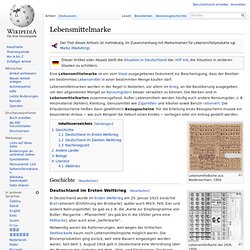
Lebensmittelmarken werden in der Regel in Notzeiten, vor allem im Krieg, an die Bevölkerung ausgegeben, um den allgemeinen Mangel an Konsumgütern besser verwalten zu können. Die Marken sind in Lebensmittelkarten zusammengefasst. Außer Lebensmitteln werden häufig auch andere Konsumgüter, z. B. Bovril. Bovril in a 250 gram jar Bovril is the trademarked name of a thick, salty meat extract, developed in the 1870s by John Lawson Johnston and sold in a distinctive, bulbous jar.
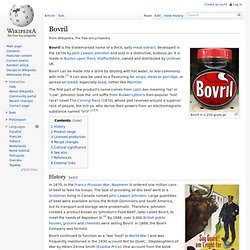
It is made in Burton upon Trent, Staffordshire, owned and distributed by Unilever UK. Bovril can be made into a drink by diluting with hot water, or less commonly with milk.[1] It can also be used as a flavouring for soups, stews or porridge, or spread on bread, especially toast, rather like Marmite. The first part of the product's name comes from Latin bos meaning "ox" or "cow". Marmite (Lebensmittel) Dieser Hefeextrakt hat einen intensiven Hefegeschmack und wird hauptsächlich als Brotaufstrich verwendet.
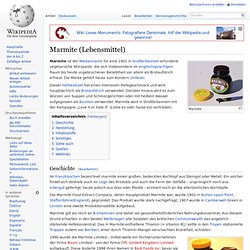
Darüber hinaus wird es zum Würzen von Suppen und Schmorgerichten oder mit heißem Wasser aufgegossen als Bouillon verwendet. Versorgung und Verpflegung der römischen Armee. Die römische Armee bildete den mächtigsten Militärapparat der antiken Welt.

Doch die stärkste Armee ist nutzlos ohne eine angemessene Verpflegung von Nahrungsmitteln. Die römische Armee bildete keine Ausnahme: Legionäre wie Hilfstruppensoldaten mussten essen und trinken und brauchten eine vielfältige Ausrüstung, damit sie kämpfen konnten. Die Grundversorgung des römischen Soldaten Jeder römische Soldat bekam eine Lebensmittelration zugeteilt, deren Preis ihm aber von seinem Sold abgezogen wurde. Getreide war dabei das wichtigste Nahrungsmittel. Beschaffung der Nahrungsmittel für die Legionen Für die römische Armee bildete das Getreide den wichtigsten Posten. War Food Administration. "Every Child Needs a Good School Lunch" The War Food Administration (1943-1945) was a predecessor agency to the Farm Service Agency.

The War Food Administration was responsible for the production and distribution of food to meet war and essential civilian needs. During World War II, it helped create School Lunch Programs in the United States, and administered farm labor programs.[1][2] Functions[edit] The War Food Administrations was established by Executive Order 9322 of March 26, 1943 (amended by Executive Order 9334 of April 19, 1943). The Administrator determined the need and amount of food available for civilian rationing, exercising his priorities and allocation powers in this connection through the Office of Price Administration. The War Food Administrator also had responsibility for farm labor supply and farm wage and salary stabilization.[3] Administrative history[edit] The National Archives website describes the origins of this agency as follows: References[edit] External links[edit]
Civil War Food. Civil War food was very different from the types of food we eat today.

Due to war-time food shortages and a lack of both refrigeration and large-scale food processing, most meals were simple, easy to prepare dishes made from basic ingredients that could be grown in a garden or purchased and stored easily. Army Food Food rations in the military were delivered to Union soldiers by volunteers in the United States Sanitary Commission. The purpose of the commission was to ensure that soldiers were fed healthy and nutritional meals to prevent malnutrition and food poisoning. Since the focus was on health and nutrition, not culinary delight, and there were around 2 million soldiers to feed, the food tended to be bland, basic and simple.
An African-American army cook in City Point, VA 1. Foods of the American Civil War. Foods of the American Civil War were the provisions during the American Civil War with which both the Union and Confederate armies struggled to keep their soldiers provided adequately.
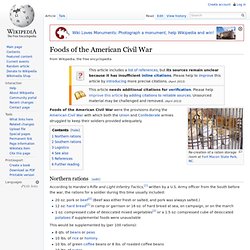
Northern rations[edit] According to Hardee's Rifle and Light Infantry Tactics,[1] written by a U.S. Army officer from the South before the war, the rations for a soldier during this time usually included: Militärische Rationen - softair-warriorss jimdo page! Wie der Name schon sagt, geht es hierbei, nicht wie im klassischen Sinne um eine militärische Ration, sondern um eine humanitäre Ration.
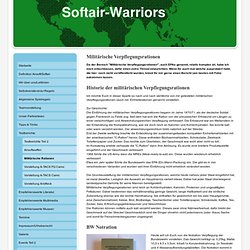
Aber auch diese Ration, die eigentlich für Zivilbevölkerung in Krisengebieten gedacht ist, wird je nach Lage, auch von militärischem Personal genutzt. Ich stelle Euch die Ration Nr.1 vor. Gewicht: ca.1kg Maße: 23x14x7 cm Inhalt: 1x Hauptgericht "Herb Rice" (Kräuterreis) 1x Hauptgericht "Beans and Rice with Tomato Sauce" (Bohnen und Reis mit Tomatensauce) 1x Fig Bar (Gebäck mit Schokofüllung) 1x Obstkuchen 1x Buttergebäck 1x Cracker 1x Gemüse Cracker. Rezepte des Krieges Europa. 1939 wurde Polen von Deutschland und Russland gleichzeitig angegriffen.
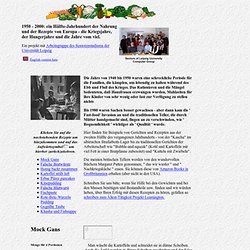
Im Alter von 14 Jahren wurde Felix Chustecki mit seiner Familie aus seiner Heimat Polen in ein russisches Strafarbeitslager deportiert. Hier beschreibt er ihre Lebensmittelrationen. Pioneer, Civil War, cowboy & Victorian foods. FoodTimeline library Food Timeline FAQs: 19th century American foodways.....Have questions? Ask! Frontier American foodways Early frontier cooking was greatly influenced by place and season. Indigenous plants and animals supplied much of the food. Sample bill of fare for middle-class home meals: 1853 In the days before home freezers and rapid transit, suggested family menus were grouped by season and presented for each day. Margarine. Margarine (Kunstbutter, über französisch acide margarique „Margarinsäure“ von griechisch μάργαρον, márgaron, oder μαργαρίτης, margarítēs „Perle“) ist ein industriell hergestelltes Streichfett.
Margarine ist länger haltbar, hat meist einen geringeren Preis als Butter oder Schmalz und wird deshalb häufig als Ersatz verwendet. Kabeljaukriege. Buttkrieg.